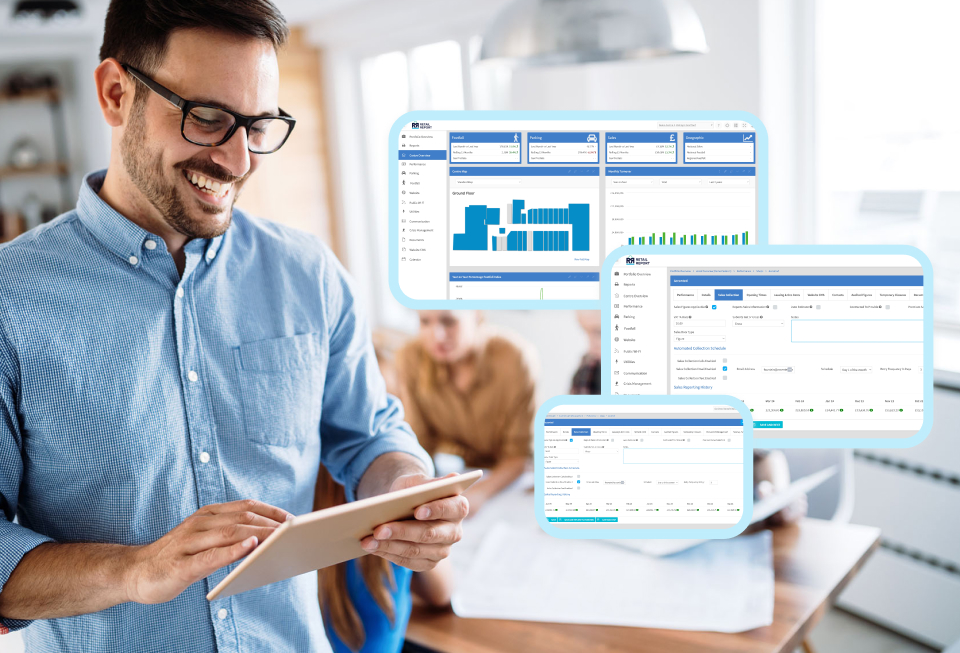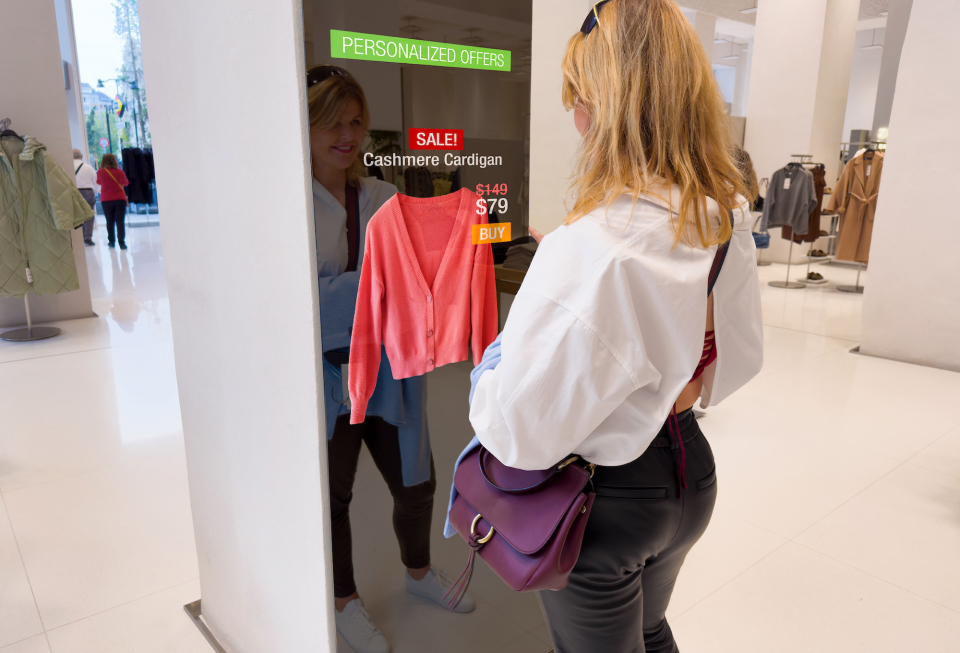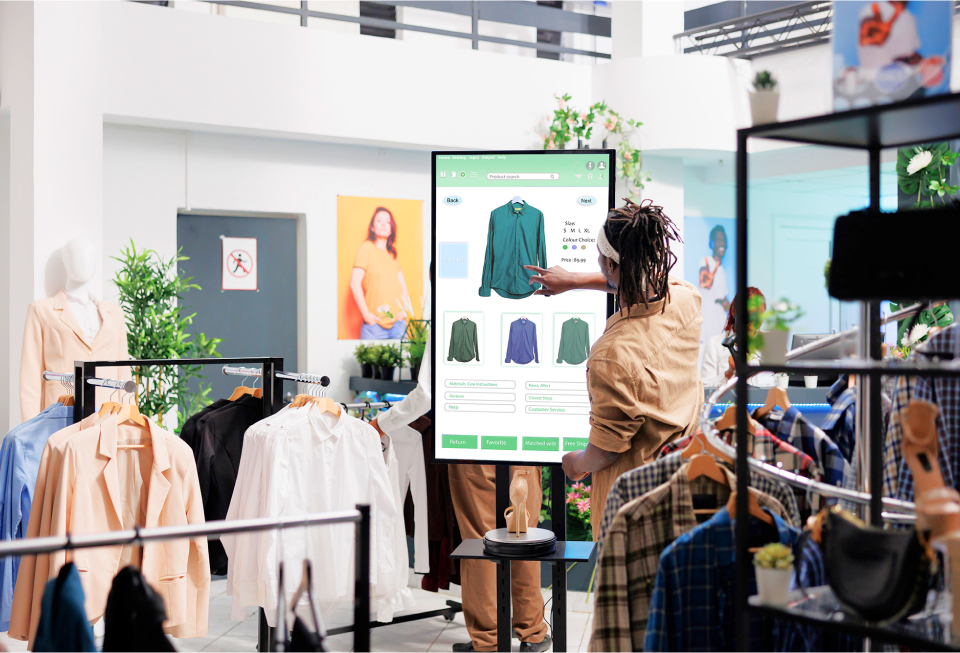Shopping malls are a central part of the retail landscape, offering everything from high street favourites and designer brands to anchor stores and quirky boutiques. However, disrupted supply chains, inflationary pressures, shifts in consumer behaviour, and other challenges have left many questioning the future of these once-thriving retail hubs.
Despite these challenges, shopping malls have not disappeared. Instead, they’re undergoing a transformation, adapting and creating new shopping experiences to meet the demands of the modern retail landscape.
In this article, we’ll explore the trends shaping the future of shopping malls and how they can ensure profitable growth in 2025 and beyond.
1. Retail analytics
Retail analytics is one of the most significant technological advancements helping shopping malls navigate their transformation. Top UK shopping malls such as The Glades, Grand Arcade, and The Atrium use retail analytics to drive performance and maintain a competitive edge.
By analysing data from various sources, malls and retailers can gain deep insights into consumer behaviour, footfall traffic patterns, and overall performance. This data-driven approach improves decision-making, allowing for more efficient and profitable operations.
Investing in a software solution like Retail Report is one of the best ways to implement retail analytics into your business.
Let’s go a bit more in-depth:
Driving performance
Retail analytics allow you to track customer behaviour, such as their movement around the shopping mall. This insight is invaluable for optimising the tenant mix, mall layouts, and marketing strategies.
For instance, using Retail Report’s heatmap data, you can pinpoint busy areas of the shopping mall to leverage and identify underperforming areas to improve – allowing you to maximise every square foot. By identifying inefficiencies and missed opportunities, you can better meet your customers’ needs and ensure your shopping mall delivers the returns it’s capable of.
Optimising operations and reducing costs
Retail analytics also play a crucial role in optimising shopping mall operations. By tracking store performance, footfall traffic, and energy usage, you can identify areas where you can reduce costs and streamline operations.
For example, Retail Report’s footfall dashboard helps you determine peak hours, allowing you to adjust your resources accordingly – whether it’s staffing, cleaning schedules, or energy management. This enables you to manage resources more effectively, avoiding overstaffing or underperforming stores during low-traffic times. It also ensures you allocate enough resources to maintain an exceptional shopping experience during busier periods.

2. Experience-based retail
To compete with the dominance of online shopping, malls are embracing the concept of “experience-based retail.” This trend is a response to changing customer preferences. People no longer visit malls solely to shop for products; they want to engage with unique and memorable experiences.
As a result, many shopping malls are incorporating activities such as cinemas, ice rinks, soft play areas, crazy golf, escape rooms, and more. These experiential additions blur the lines between retail spaces and entertainment venues, creating an environment where shopping becomes part of a larger, multifaceted experience.
For example, Silverburn in Scotland, provides a cinema, activity centre, soft play area, and gym in addition to its traditional retail offerings. These activities appeal to people looking for a day out with family or friends, helping the mall drive footfall traffic and encourage longer visits.

3. Technology
Technology will be a driving force in shaping the future of shopping malls. Smart malls, powered by cutting-edge technologies like artificial intelligence (AI), augmented reality (AR), and the Internet of Things (IoT), are already beginning to emerge. These technologies help create a more personalised, convenient, and engaging shopping experience.
Let’s explore a few examples:
AI
AI is the biggest disruptor to shake up the retail industry since the rise of online shopping. Shopping malls are recognising the potential of AI and they’re leveraging it to stand out from the competition. AI can gather data on consumer behaviour and preferences, allowing malls to offer personalised recommendations and targeted promotions. These personalised experiences encourage repeat purchases, long-term loyalty, and brand advocacy – ultimately increasing customer lifetime value (CLV).
AR
AR is bridging the gap between online and in-store retail, making the shopping experience more immersive, personalised, and engaging. For instance, it can be used for virtual try-ons, where customers can see how clothes and accessories look on them without physically trying them on.
IoT
IoT devices could enable smart parking systems, efficient crowd control, and more streamlined customer service. This addresses some of the pain points of brick-and-mortar retail, creating a more enjoyable shopping experience.
Mobile apps
Mobile apps can enhance the shopping experience by offering features like navigation, real-time store promotions, digital payments, and booking systems. These innovations help shopping malls remain competitive by offering a seamless and modern shopping environment.

4. Hybrid retail
E-commerce offers convenience, but shoppers still enjoy visiting physical stores. That’s not going to change in 2025. As a result, forward-thinking shopping malls are implementing hybrid shopping experiences that incorporate the best of both worlds.
A typical retail journey today has multiple touchpoints across physical stores, websites, mobile apps, and social media. A hybrid approach puts your brand in front of a more diverse audience, reaching them at every touchpoint in their retail journey.
Here are a few examples:
Click and collect
Click and collect gives customers the option to buy products online and pick them up at their nearest store. This allows them to enjoy the convenience of online shopping while avoiding home delivery charges.
In-store digital kiosks
Introducing digital kiosks gives customers access to a wider range of products. They can check product availability across all stores and online, and have the item shipped to their desired location. This provides the benefits of online shopping while maintaining the in-store experience.

5. Sustainability
As customers increasingly prioritise sustainability, businesses face growing scrutiny and pressure to meet new standards and adapt to changing shopping habits. In 2025, shopping malls will need to re-evaluate their business models, adopting sustainability as a fundamental aspect of their mindset and operations.
Market-leading brand, Selfridges, is a great example of an impactful shift towards sustainability. Their ‘Project Earth’ initiative focuses on sustainable materials, new shopping models, and challenging mindsets, with a commitment to becoming Net Zero by 2050.

Conclusion
The future of shopping malls is undoubtedly changing. As the retail landscape evolves, shopping malls continue to adapt, becoming dynamic, multi-functional spaces that cater to the diverse needs and desires of the modern customer. By embracing innovation, your shopping mall can remain relevant and thrive in the years ahead despite ongoing challenges.